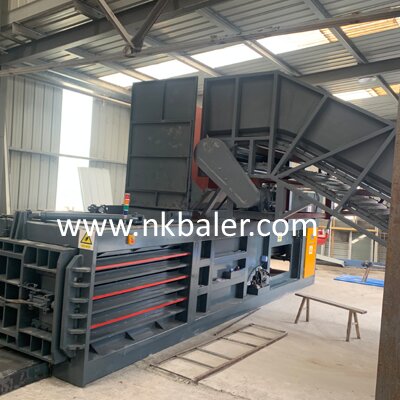To approach the design innovation of a high-efficiency waste compressor,we need to consider several aspects that can improve its performance,efficiency,and usability.Here are some suggestions:
Intelligent Sorting System: Implement an AI-based sorting system that automatically sorts waste before compression.This system could differentiate between materials such as plastic,metal,paper,etc.,compressing them separately and thus improving the recycling process and the purity of the recycled material.Variable Compression Ratio: Design the compressor with a variable compression ratio that adjusts based on the type and volume of waste.This customization optimizes the compression efficiency for different types of waste,reducing energy consumption and increasing packing density.Energy Recovery System: Incorporate an energy recovery system that converts the heat generated during compression into usable energy.This could be in the form of electricity or thermal energy,which could power other parts of the waste processing facility or be fed back into the grid.Modular Design: Create a modular design that allows for easy upgrading or replacement of parts without the need to replace the entire machine.This design would also facilitate customization based on the specific needs of different waste management facilities.Integrated Maintenance System: Develop an integrated maintenance system that uses sensors to monitor the condition of critical components.Predictive maintenance alerts can then be sent to operators to perform maintenance before a breakdown occurs,reducing downtime and extending the lifespan of the equipment.User-Friendly Control Interface: Design an intuitive control interface that provides real-time feedback on performance metrics such as compression levels,energy consumption,and system status.This interface should be accessible via mobile devices or remote computers to allow for monitoring and adjustments from anywhere.Sustainable Materials: Use sustainable materials in the construction of the compressor to reduce the environmental impact.This includes using recycled plastics,bio-based lubricants,and non-toxic paints and coatings.Noise Reduction: Engineer the compressor to minimize noise pollution by using sound-absorbing materials and optimizing the Fully Automatic Waste Compressor to reduce operational noise.Multi-Compartment Compression: Design the compression chamber with multiple compartments that can compress different types of waste simultaneously.This increases the throughput and efficiency of the compressor,especially in facilities with diverse waste streams.Odor Control System: Integrate an odor control system that manages and neutralizes unpleasant smells emitted during the compression of organic waste.This can involve filters,ozone generators,or other methods to ensure a pleasant working environment.Safety Features: Prioritize safety in the design by including emergency stop buttons,protective barriers,and sensors to detect human presence in hazardous areas.Automatic shut-off features when the doors are opened can prevent accidents during maintenance or misuse.Ergonomics and Accessibility: Ensure that the compressor is designed with ergonomics and accessibility in mind,allowing for easy operation,maintenance,and cleaning by personnel of all abilities.Connectivity and Data Analytics: Make the compressor “smart” by integrating IoT (Internet of Things) capabilities,allowing it to connect to a network and transmit data on its performance.This data can be analyzed to optimize operations,schedule maintenance,and make informed decisions on waste management strategies.

By incorporating these innovative design elements,the high-efficiency waste compressor can lead to significant improvements in operational efficiency,sustainability,and overall effectiveness in waste management processes.
Post time: Jul-05-2024